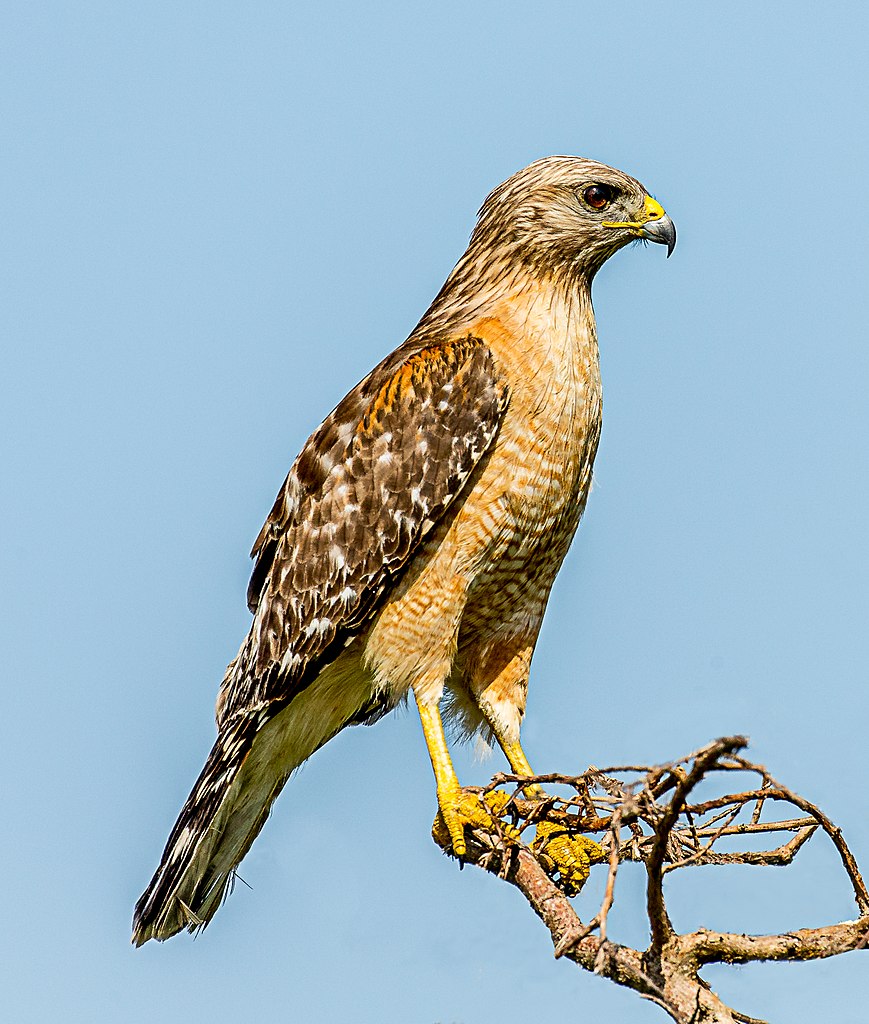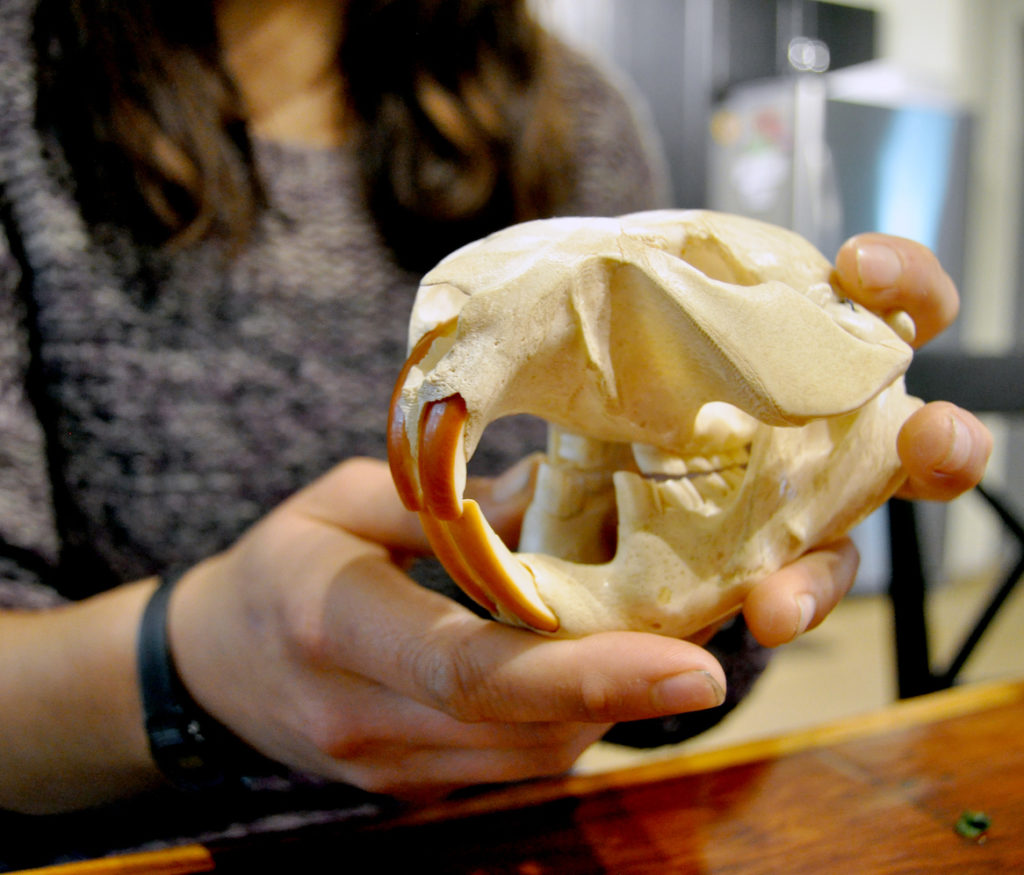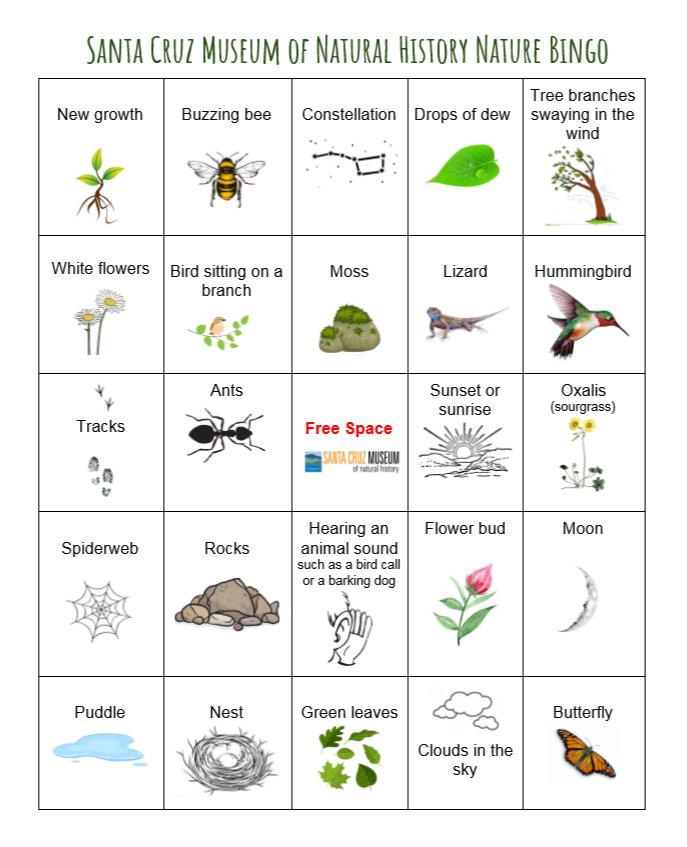Reuse materials from your home to create a tool to help you observe the secret world of insects more closely — a bug net!
Post by Marisa
Reuse materials from your home to create a tool to help you observe the secret world of insects more closely — a bug net!
Post by Marisa

You can learn a lot about an animal just by making careful observations. If you want to know what an animal eats, a good place to start is by looking at the teeth. But what if they don’t have teeth? When looking at birds, it’s all about the beak! Different beaks can tell us quite a bit about what that particular bird eats.
Explore different bird species through this short presentation and figure out what they eat by making careful observations of their beak shape.The next time you go outside, try paying close attention to any birds you see – what does their beak look like? What are they eating? You might start to notice all kinds of interesting behaviors and adaptations!
Learn more about birds with the resources in our Online Museum Store.
Post by: Ellen
What do animals need to survive? This short lesson explores that question and dives into the different kinds of places where animals can live, and how different animals can survive in their habitats. It’s up to you to use the clues to figure out which animals live nearby!
Learn more about mammals with these resources in our Online Museum Store.
Post by: Ellen
What do plants need to grow and how do different seasons affect them? To answer these questions we need to pay close attention to the world around us and think about what changes each season brings.
Dive into the short slideshow below to explore what plants need to survive and grow, then go look around where you live and see what plants you can find! When you find some plants, you may wonder: Are they in sunny spots? How do they get water? Do you know the names of any plants?
Activity and resources:
Sourgrass (Oxalis sp.) is a plant of extremes: children love its strong flavor, pollinators gorge on its abundant nectar, many adore its ability to overwhelm a field when in bloom, and many still detest the invasive qualities of some of its species. Oxalis pes-caprae, native to South Africa, has made itself comfortably at home in California, forming dense mats that outcompete native plant species for light and space.
Whether you love it or can’t stand it, sourgrass has an interesting hidden quality that is both useful and exciting: it dyes fabric a vibrant, neon, highlighter-yellow color. Watch our video tutorial to learn how to play with its pigment and explore more resources below:
Post by Marisa. Explore other resources from The Museum At Your Side.
Who is a naturalist?
It doesn’t take much to be a naturalist – anyone can be one! A naturalist is someone who enjoys spending time in nature, exploring aspects of the natural world, and making observations about the things that they see. Does that sound like you? If so, you are a naturalist! A naturalist is CURIOUS, EXCITED about learning and discovering, and RESPECTFUL towards all living and non-living beings in the world.
What do you need to be a naturalist?
Your most important tools are the senses you have available to you. Those senses may include: SIGHT, HEARING, TOUCH, SMELL, and TASTE. You can use these “tools” in so many ways to observe your surroundings and to discover patterns in nature!There are some other tools that naturalists bring with them to investigate nature more closely. Many of these tools can fit right inside a backpack, meaning that you can take them anywhere!
Safety first!
Before we talk about WHAT you can bring on your adventure in nature, it’s important that we go over a few things to help keep you and the environment safe.
Journal and Art Supplies
A great place to start is with paper and pen or pencil. An important part of being a naturalist is taking notes and recording the things you see!
Why do you think it’s important to record observations in this way?
If you like to draw, you can take your favorite art supplies with you to make sketches of the things you see. There is no wrong way to nature journal! Ask questions in your journal, get creative, make graphs – it’s up to you!
If you’re stuck on what to write about, you can try “I Notice, I Wonder, and It Reminds Me Of”. All you have to do is choose something you see in nature and finish those sentences based off of the observations that you’re making with your senses!
Some good resources to help you with nature journaling:
What’s That?
Have you ever been on a walk in nature, saw something AMAZING , and wondered, “What IS that?”. This is where field guides come in handy! A field guide is a book or handout that helps you identify things that you can find in the natural world. There are so many field guides out there in the world – whatever you are interested in, there is definitely a field guide for it!
Field guides are great to use after you have spent time with your organism, making observations about what you notice about it. They can tell you the name of the organism as well as any other cool information about it!
There are a lot of helpful books to get you started on your identification. Field guides can be foldable pamphlets, too – easy to carry around in a backpack! There are also so many field guides online that you can download to either print or view. You can even create your own field guide!
Look Closer!
Up close or far away – there are a lot of tools we can use to help us focus our eyes on the things we see in nature! Here are just a few.
Binoculars
Look! There’s a bird perched high up in that tree. One way to look at it a little more closely is by using a pair of binoculars. Binoculars are tools that have two lenses for your eyes that help magnify your vision.
How to Use Binoculars
Magnifying Glass or Hand Lens
These tools help us see details up close- like the scales on a butterfly wing, tiny hairs on a fuzzy plant, or tiny organisms swimming around in the water! Peer into a magnifying glass or hand lens and see what you can find.
Good places to find these tools:
Gettin’ Buggy!
Watch a spider spinning its web, follow a butterfly from flower to flower, or watch a worm wriggle in the dirt! There is so much to learn about these tiny creatures – they are not to be overlooked!
There are ways we can safely look more closely at insects. An insect net is a tool that helps you safely capture insects so that you can make observations. You can carry some small jars with holes in the lid or sides to create a temporary home for the insect while you take a closer look. It is always better to just look with our eyes when we find insects, but if we are careful, we can use these tools to get a better understanding of our six-legged friends.
Remember! Never pick up or touch an insect you are not familiar with. Make sure to be gentle when using your net to observe living creatures. Always release insects in the same place you found them after you are done making observations!
Now your bag is all packed and you’re ready to explore!
Who knows what wonderful surprises you’ll find out in nature?
Post by: Ellen
Careful observation and data collection are practices that all scientists and naturalists employ to aid in exploring and understanding the natural world. Weather provides a great way for students to practice both, as they watch from their window or take measurements outside. As students begin to detect patterns and notice differences in weather, questions emerge: how do clouds affect temperature? What about wind? Is what I’m seeing normal for this time of year? Diving into weather observations reveals a world of phenomena at play all around us every day.
This lesson is designed to run over the course of a week or more, requiring small time commitments of 5-10 minutes each day from individual students and then either group or self-reflection and analysis at the conclusion.
Materials:
Optional: Pair this lesson with our Cloud Observation Activity.
Post by: Spencer

There’s a mystery that we need to solve. What do these animals eat? Observe three different native animal skulls and learn about different types of teeth to solve this mystery!
In this 30-40 minute activity, students will use a slideshow to guide them. Students will learn about the different types of teeth that animals have, and how teeth can be clues that help us figure out what an animal eats. Students will observe three different native animal skulls and make educated guesses about if they are a carnivore, herbivore, or omnivore. Based on their learning, they will draw one of the animals and label the different types of teeth.
This activity was adapted from the Our Animal Neighbors Program for distance learning and is for 2nd and 3rd graders. It can be used with younger grades, but students may need assistance with reading.
Materials provided:
Learn more about mammals with the resources in our Online Museum Store.
Post by: Elise
Play this bingo game during your time at home, yard, or neighborhood! Throughout the day stop to look out your window and see if you can find any of the things listed on the board. Try looking out all the windows in your house and at different times of day. Aim for 5 in a row, or find them all and call yourself a nature detective!

Post by: Elise
Take a tour through the Santa Cruz Museum of Natural History with our Museum coloring book! This booklet features many of our favorite exhibit features – from our tide pool and sea cow skeleton to our observation honeybee hive. Learn fun facts and bring some color into your Museum favorites!

Post by: Natalie